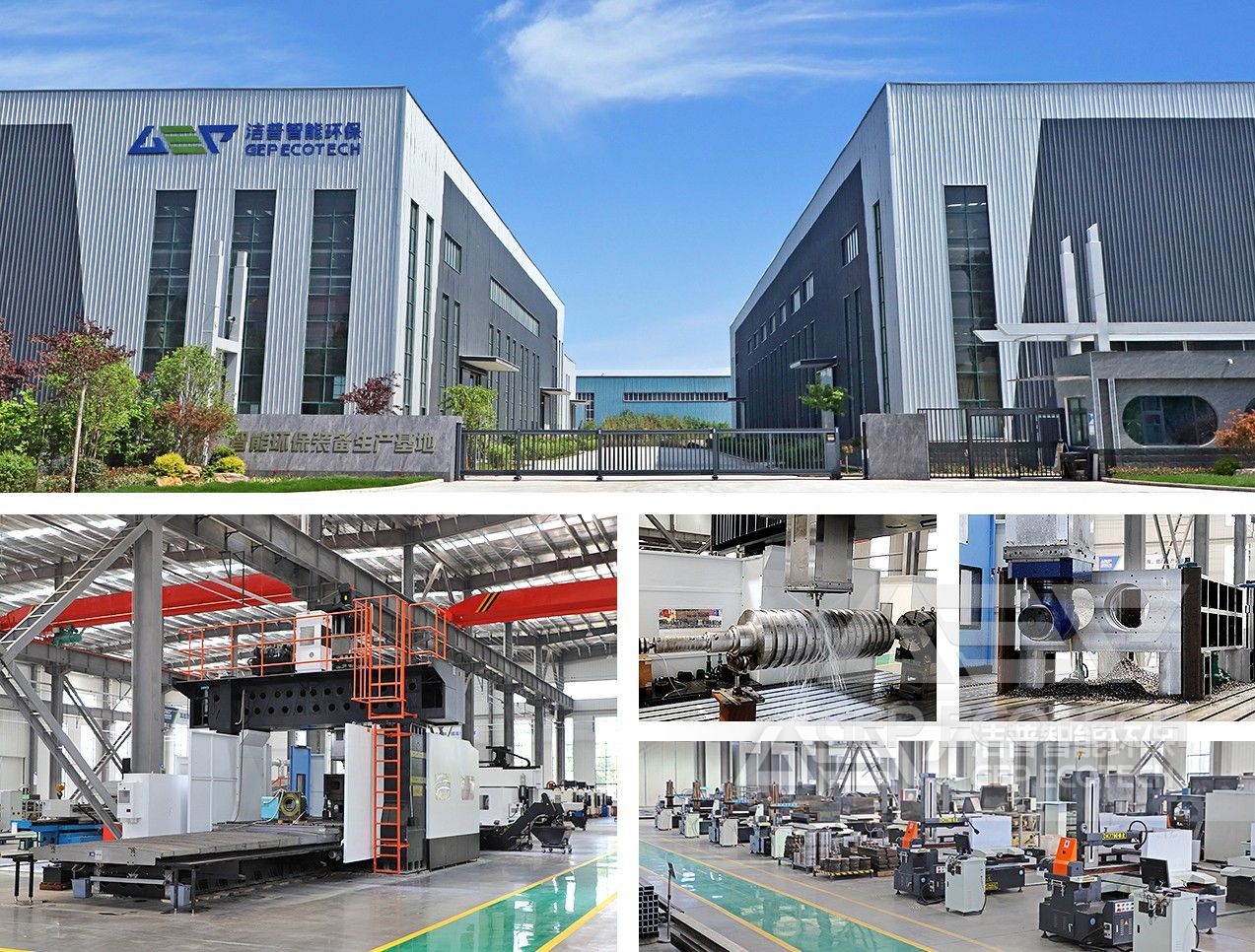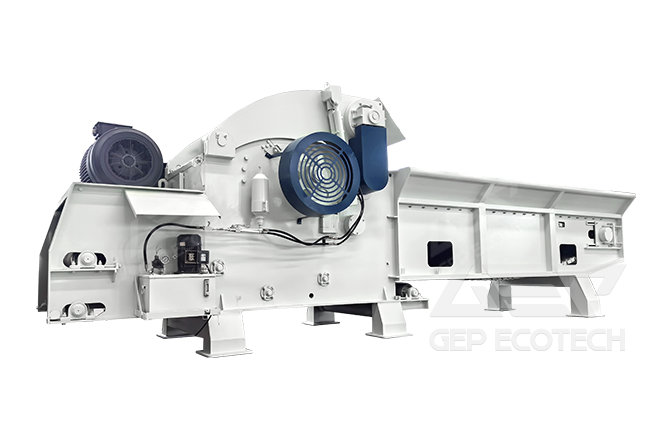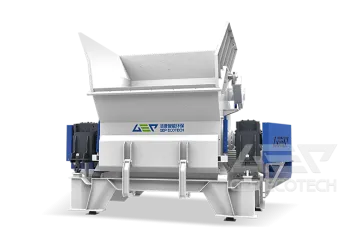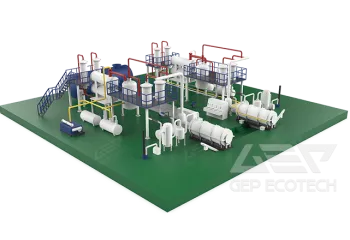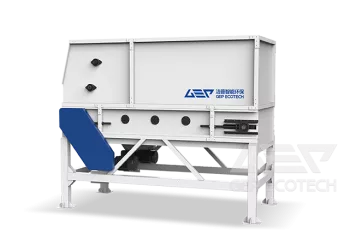China is the world's largest producer, consumer, and exporter of textiles, with the total amount of textile fibre processed accounting for more than 50 per cent of the world's total. As per capita fibre consumption continues to increase, large quantities of waste textiles are being produced.
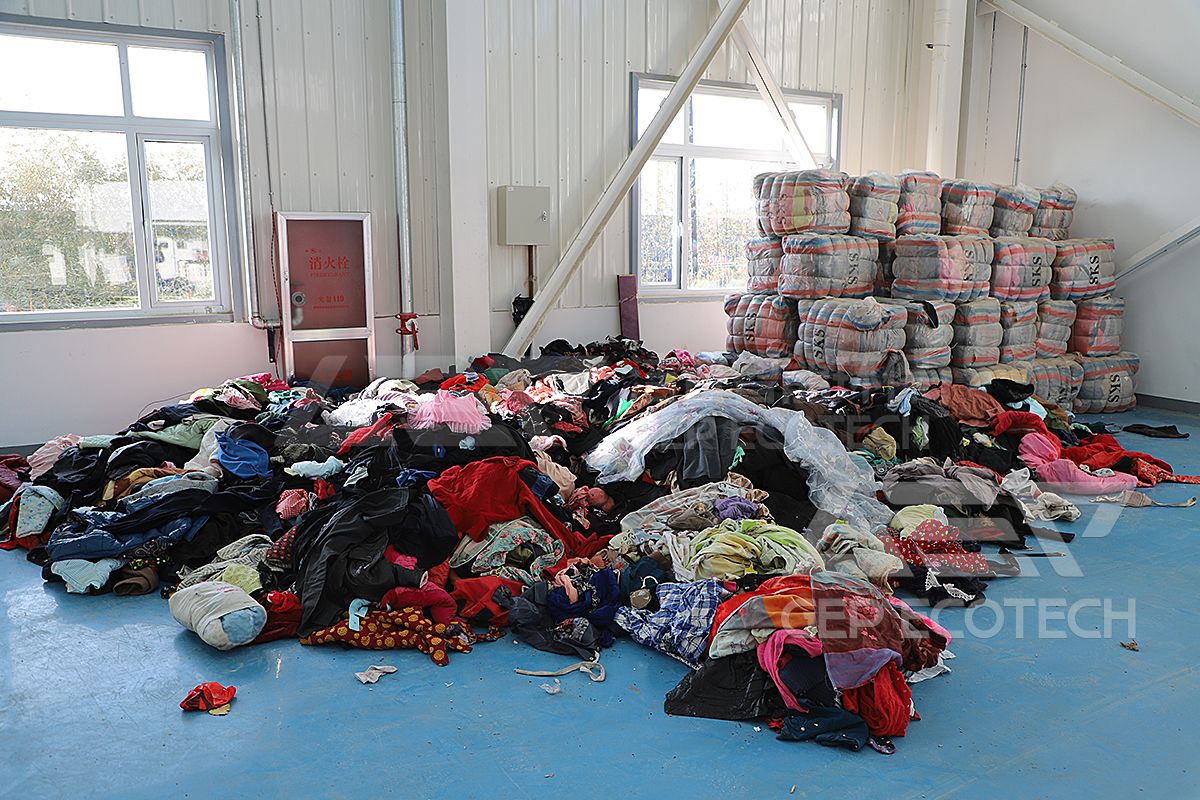
In April 2022, the National Development and Reform Commission, the Ministry of Commerce, the Ministry of Industry and Information Technology jointly issued the "Implementation Opinions on Accelerating the Promotion of Recycling of Used Textiles", which requires that by 2025, the recycling system of used textiles will have been initially established, the recycling capacity will have been significantly improved, the recycling rate of used textiles will have reached 25%, and the production of used textile regeneration fibres will have reached 2 million tonnes. By 2030, a more complete recycling system for waste textiles will be built, the awareness of producers and consumers of recycling will be significantly improved, the high-value use of pathways will be expanded, the level of industrial development will be significantly improved, the recycling rate of waste textiles will reach 30%, and the production of recycled fibres from waste textiles will reach 3 million tonnes.
The status quo is that China produces more than 22 million tonnes of waste textiles each year, but the recycling rate is only 20%. Data show that if all of China's waste textiles recycling, a year can provide 12 million tonnes of chemical fibres, natural fibres 6 million tonnes, equivalent to saving 24 million tonnes of crude oil, more than half of the output of the Daqing oil field. Visible, improve the recycling rate of waste textiles, not only can effectively supplement the supply of raw materials for China's textile industry, but also to alleviate the resource and environmental constraints. In the face of such a huge potential development space of the "mine", what should we do?
Waste textile recycling methods
- Currently, waste textiles are mainly recycled through the following methods:
Zero-level recycling method: This is the simplest recycling method. After sorting, cleaning, repairing and sterilizing the recovered waste textiles, they will continue to be circulated for their original purpose, flow into rural or remote villages, or be exported to economically underdeveloped countries. - Primary recycling method: textile production will produce waste, waste silk, there are also unused trimmings, these wastes are relatively clean, and will be mixed with new materials, made of new textile materials, not only to eliminate waste, but also cost savings, two birds with one stone.
- Physical recycling method: Without destroying the chemical composition and structure of polymers, mechanical force is used to assist in crushing waste textiles, which are sorted, purified, dried, and processed with the addition of relevant additives, and reused in the production of new textiles.
- Chemical recycling: Chemical reagents are used to degrade or decompose the materials in used textiles, which are polymerized into polymers and used to prepare recycled fibres, or small molecules of the degradation products are used for non-textile material applications.
Zero-level recycling and primary recycling methods are widely used because they are simple and easy to operate, with low technical content, but waste textiles that do not meet the requirements of the law are simply landfilled or incinerated, thus resulting in a waste of resources; on the contrary, physical recycling and chemical recycling methods have not yet gained popularity because of their high technical requirements and high cost investment.
The energy recovery method that stands out
In addition to the methods mentioned above, the energy recovery method is gaining increasing attention and recognition in society. The so-called energy recovery method is to convert chemical fibres with a high calorific value in waste textiles into heat by incineration, which can be used for thermal power generation and heating. This method is different from simple and rough incineration. Incineration, low cost, easy to operate, but serious pollution of the atmospheric environment, hindering the achievement of the "dual-carbon" goal; energy recovery law is to make waste textiles in the form of fuel to achieve energy recovery, thereby improving its recycling rate.
So how do you make the switch from waste textiles to fuel? With the GEP ECOTECH's Alternative Fuel Preparation System for Waste Textiles the solution is perfect.
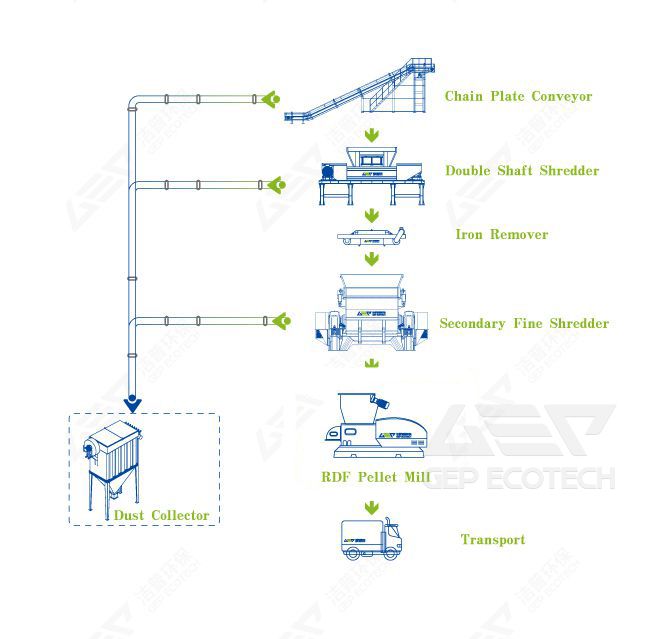
The system adopts the process of pre-shredding, magnetic separation, fine shredding, and moulding, which can effectively convert waste textiles into RDF alternative fuel with high calorific value. If the material composition is not so pure, we can also add wind separator, metal detector and other equipment to get clean RDF fuel through multiple sorting and filtering. The whole system is equipped with professional dust removal equipment, which can effectively deal with the dust generated during the operation without secondary pollution.
The calorific value of fabrics and vinyl coatings, which are common in textiles, ranges from 4,200 to 4,800 calories, which is nearly 0.8 times that of power coal, and 1.2 tonnes of fuel made from waste textiles is equivalent to the heat energy provided by 1 tonne of power coal. With the magic weapon of high calorific value, the fuel made from waste textiles can be sold at a big price. If you are a fuel preparation manufacturer, then congratulations, you can collect disposal fees from waste-producing companies and earn money selling alternative fuels to coal-fired power plants and cement plants, a win-win situation!
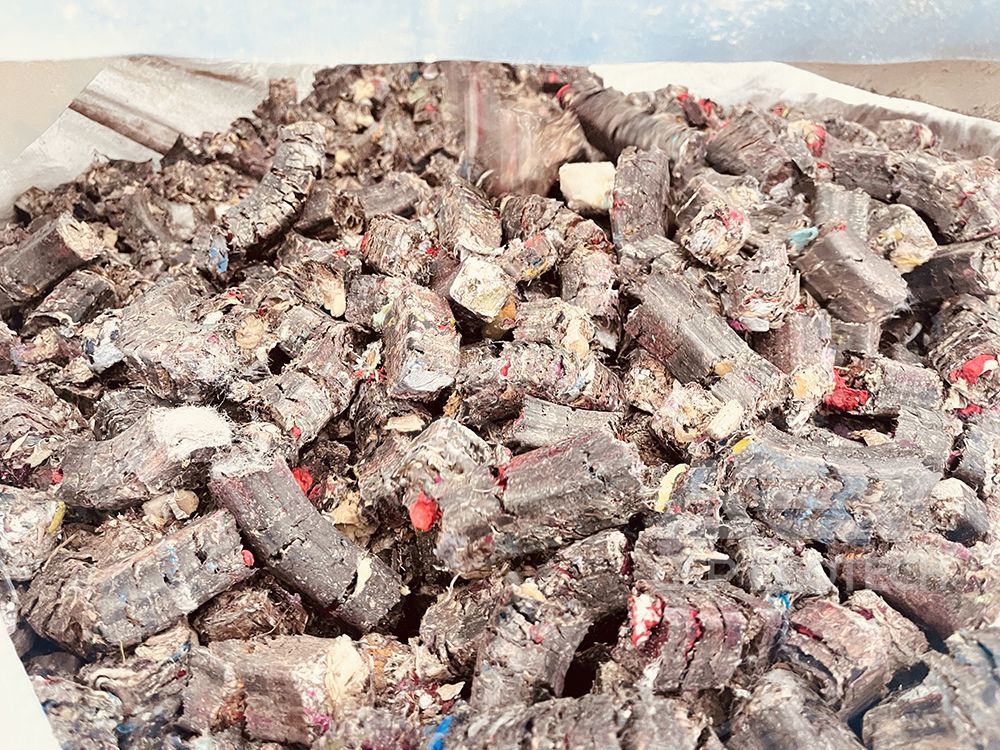
Only by choosing a reliable big enterprise like GEP ECOTECH, can we reduce the pollution burden for the country and get high profits at the same time.
